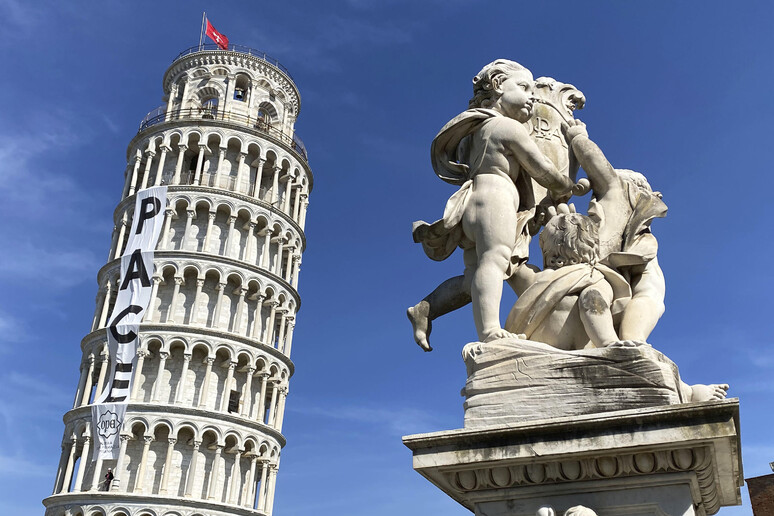The Leaning Tower of Pisa is in
excellent health, the local heritage protection agency said
Wednesday.
"Considering it is an 850-year-old patient with a tilt of around
five metres and a subsidence of over three metres, the state of
health of the Leaning Tower of Pisa is excellent," said Opera
Primaziale Pisana.
It was issuing the results of the latest check-up on the iconic
landmark 21 years after an intervention that pulled it slightly
back upright in 2001.
"As (then project leader) Michele Jamiolkowski stressed," said
Pierfrancesco Pacini, the president of the Primaziale, "the
Tower's stabilization was a full blown and difficult challenge
for geotechnical engineering due to the fact that the
interventions at the foundations could have been dangerous and
so the use of conventional technologies like cement injections
or sub-foundation work bore an unacceptable risk".
The legendary Pisan monument is stable and has slowly lost a
tiny bit of its trademark tilt, a group of researchers
monitoring the Tuscan monument said recently.
The tower lost a reported 4cm of its tilt in the past 20 years
and its health is better than forecast by an international
committee coordinated by Jamiolkowski between 1993 and 2001,
which planned and coordinated consolidation work, the
surveillance group led by Salvatore Settis, Carlo Viggiani and
Donato Sabia said.
Nunziante Squeglia, a professor of geotechnics at the
University of Pisa who cooperates with the monitoring group,
said that the tilt has decreased thanks to stabilization work,
along with "oscillations now varying at the average of 1/2
millimeter a year, although what counts the most is the
stability of the bell tower, which is better than expected".
The group's activities, which are funded by the non-profit
Opera della Primaziale Pisana, include monitoring the tower and
improving the quality of conservation measures, as well as
promoting research on the monument.
At least one Italian official thinks the tower will one day
straighten up, thanks to modern engineering.
Giuseppe Bentivoglio, technical director of the monument,
said the 56-meter bell tower's lean towards the south is
shrinking thanks to an 11-year restoration project completed in
2001.
The free-standing cathedral tower began tilting during
construction, in the 12th century, because of an inadequate
foundation on ground that was too soft on one side.
The tower was saved from toppling in a decade-long
engineering project in the 1990s, reopening to the public in
December 2001.
The reopening was made possible thanks to a
53-billion-lire project - involving steel girdles, lead
weights, and a heap of digging - that straightened the tower
by 40cm, hauling it back to the position it had in the
mid-19th century.
Before the efforts to reverse the lean, the eight-storey
tower was adding an average of 1mm a year to its 4.5-metre
lean out of the perpendicular.
The tower was begun in 1174 but was only completed in
1350, when its tilt was already about half what it is today.
In a 2005 check-up on the tower's health, experts
pronounced it safe for the next three hundred years.
ALL RIGHTS RESERVED © Copyright ANSA











